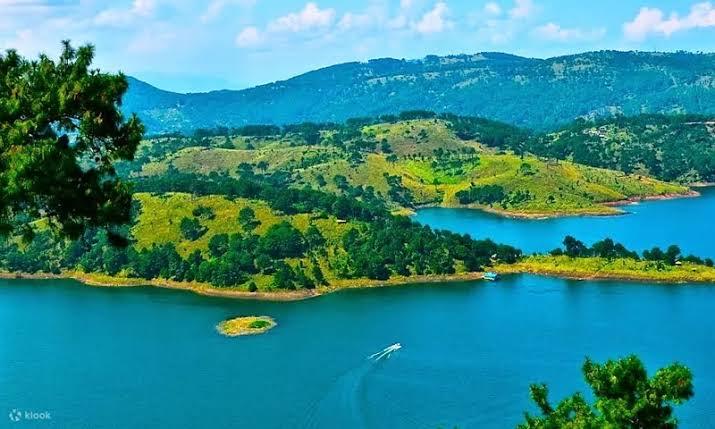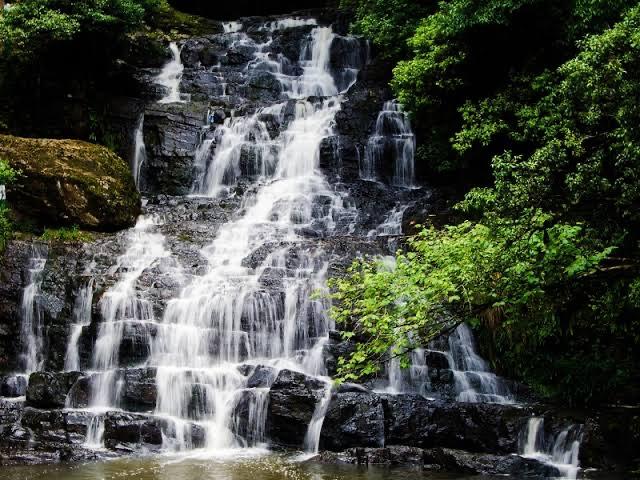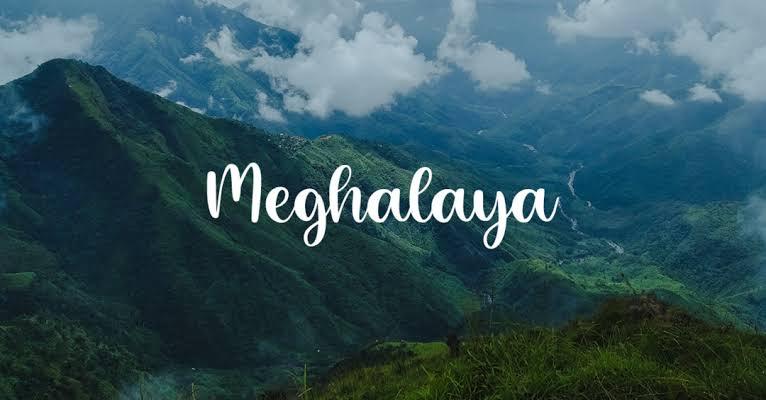What could have been asked for more? The northeastern part of India is a hidden gem of India. Why is it a hidden gem? Because despite a steady stream of Indian and foreign tourists every year, only a few venture out into the northeast, which is much like a Pandora’s Box. With natural beauty, biodiversity, heritage, authentic local cuisine, and the best of native folks and their folklores, there is hardly any room for complaints. Yes, here we are talking about the perched atop a hilly terrain, and overlooking the Bangladeshi plains is Meghalaya, which in Sanskrit means “the abode of clouds.” amongst the Seven Sister States of northeastern. I fell for Meghalaya for more than many reasons like breathtaking waterfalls, the eerily beautiful Living Root Bridges, Limestone caves, and Monoliths. A long list indeed!
Meghalaya is a hilly state that can be categorized into three different parts- West Meghalaya Garo Hills, Central Meghalaya Khasi Hills, and Eastern Meghalaya Jaintia Hills. Meghalaya is bounded by Assam on the north and Bangladesh on the south and west.
Shillong: In the rainy season of 2022 My family and I decided to visit this beautiful paradise which is called the “Scotland of India”. We started from Delhi for Guwahati. There are two ways of going to Shillong. You can select Shillong airport or Guwahati airport and can have the mindblowing experience of natural beauty by availing yourself of the services of a car or a bus. We took the second option and landed at Guwahati airport.
We reached the city around 1 pm and began our journey to Shillong by a minibus which drove 11 of us through Assam, waiting excitedly for the cool breeze of Jaintia Hills.
A three-hour drive uphill from Guwahati takes us to Shillong, the capital of the state which lies at a height of 1,496 meters above sea level. En route, We passed the first halfway mandatory stop at Nongpoh, where we had savor a cup of tea while watching the breathtaking beauty of the hills. Local women behind small stalls were selling pineapples and bananas, honey and pickles- all range of common to rare pickles right from the chilies to mango to bamboo pickles in bottles. We bought bamboo pickles. We started through green mountains, and thick Himalayan foliage and enjoyed the pollution-free mountain air. We drove past hamlets, small fruits and momos stalls, and a beautiful water body, which was situated 17 km before Shillong. I asked locals the name of that water body or the lake: “Barapani or Umiam lake”. It’s not a natural lake but a dam, a manmade lake, they said. Later I found that it is indeed a reservoir and an artificial lake and was formed by damming the Umium river and covers about 220 square km. This is the first hydro-powers well past the near project in this part of the country. Barapani is a major tourist attraction

Umium Lake
Soon We reach the outskirts of Shillong. We had booked our accommodation well in advance and that was a big relief. We stayed at one of the most reputed and picturesque hotels in the northeast – Pinewood Hotel. It was perched in a secluded area, away from the hustle and bustle of the town. After having a cup of refreshing tea, we decided to visit the busy streets of the town. One of the most talked about and lively places are the Police Bazar. Famous for its roadside shops for the street smart shopper or the swanky malls for handicraft items. We were not able to explore it much because of its extremely jam-packed roads. Our driver was not able to find parking and was not allowed to park the car by the roadside. We slipped into an eatery that we spotted near us and had khasi dinner (though it was like a hard nut to crack to find veg food in khasi dinner somehow we could manage whatever little variety of veg items we were served). We retired to our hotel room and decided to explore Shillong on the next day and were anxious to tour Cherrapunji on the third day.
The next day after having breakfast in the hotel, we headed to the Don Bosko museum. Don Bosco, the center of indigenous cultures is the perfect introduction to the people and culture of North East India. We spent 3-4 hours here is highly informative as you get to know the rituals, customs, attire, old weapons, occupation, way of life food, etc. of various tribes of North East India. Replicas are built to make it easy to understand and for children to enjoy a visit here. The skywalk on top also gives an amazing view of Shillong city. Don Bosco museum is highly recommended for all.

Elephant Falls
After The Don Bosco, we moved to Elephant Falls. This unique fall gushes out water in three tiers, the bottom one is the most spectacular. There are about 150 steep steps that take you down till the bottom of the fall. The crystal-clear stream of water cuts through the protruding rocks vigorously. We took a small boat ride which took us to the extreme close to the Fall, tiny droplets gave us the feeling of being so close to the magnificent fall. After visiting the Fall, we had our lunch and proceeded to the highly-recommended Shillong peak, situated very close to Elephant Falls. We had heard a lot about the spectacular bird’s eye view of the city that this peak offers. However, while we were on the way, we were welcomed by our hosts, the Meghalaya clouds. It suddenly started raining. And when it rains in Meghalaya, it doesn’t just rain, the clouds literally come close to you and embrace you. We went up to the top of the hill and lo! the view was something like that we could see nothing but fairy-tale-like clouds covering the entire city. Yes, the clouds did play the spoilsport as far as the view was concerned, but none of us regretted being literally on top of the rain clouds.
However, if you visit the peak when it isn’t raining, you can see the Himalayas and the Bangladesh plains from here.
Meghalaya is a wonderland for wildlife. The state is gifted with species like red panda, gorillas and elephants, gibbons, and more. Crack open this treasure chest of flora, fauna, and wildlife by visiting parks like Nokrek National Park, Balpakram National Park (where you’ll find the rare red panda), Siju Bird Sanctuary, and more. We were short of time so we could not visit those places but kept them for our next trip.
The next day after gorging on the delicious breakfast served by our hotel, we started early for avoiding the daytime traffic of the city for Cherrapunji. Cherrapunji, also known as Sohra or Churra, means ‘the land of oranges. The cliffs of Cherrapunji also offer stunning views of the plains of Bangladesh.




 Each title in our collection is more than just a book - it’s a ‘green gift’, promoting mindful reading, sustainable values, and a culture of eco-conscious living. By gifting books, you open doors to new ideas, support lifelong learning, and nurture a more informed, compassionate, and environmentally aware individual.
Each title in our collection is more than just a book - it’s a ‘green gift’, promoting mindful reading, sustainable values, and a culture of eco-conscious living. By gifting books, you open doors to new ideas, support lifelong learning, and nurture a more informed, compassionate, and environmentally aware individual.
A wonderful first hand description of the beautiful state of Meghalaya through this travelogue.
A well written piece that vividly describes the local beauty f Meghalaya and tele-transports us to the place.
The local knowledge keep tumbling out of the piece here and there that adds local flavors in this write up. A must read for those planning to visit the this wonderful state.